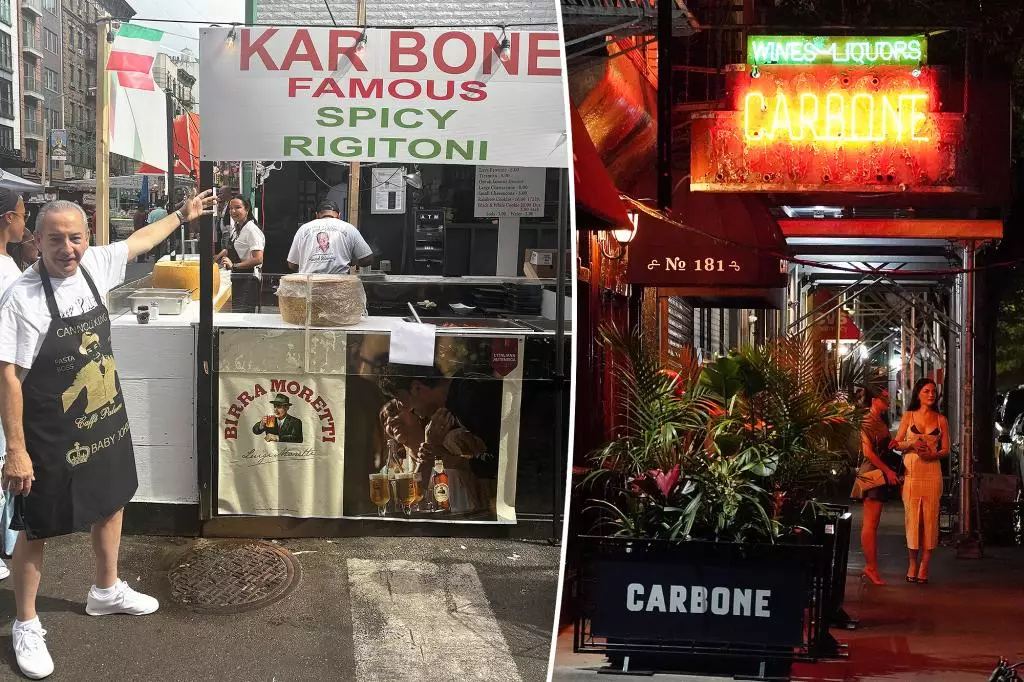In the world of gastronomic delights, few dining establishments have earned the kind of cult status that Carbone, the Greenwich Village Italian restaurant, has achieved. Revered for its celebrity clientele and a signature dish that has captured the taste buds of locals and tourists alike, Carbone’s spicy rigatoni has become synonymous with high-end dining. So, when local restaurateur John “Baby John” DeLutro decided to create a dish eerily similar to Carbone’s, the move raised eyebrows and sparked discussions about creativity, originality, and competition in the culinary landscape.
At the heart of this culinary tug-of-war is Baby John’s pasta stand, which sits at the iconic Feast of San Gennaro—an annual celebration steeped in tradition that attracts thousands each year. The stand makes a bold claim with its signage advertising “KAR BONE FAMOUS SPICY RIGITONI,” a cheeky homage to Carbone’s flagship dish. This is not just a casual imitation; it’s a calculated effort to draw attention and traffic during a bustling festival that honors San Gennaro, the patron saint of Naples. Baby John’s decision to incorporate such a familiar reference showcases the blurred lines between homage and infringement in culinary branding.
DeLutro’s reasoning behind this audacious marketing strategy stems from a past experience where a competitor used a similar playful spelling with “cannoli.” Believing that legality is on his side, he argues that if others can adapt a name intentionally misspelled, then so can he. His cavalier attitude towards the name’s slight alteration raises crucial questions about market identity and ethical boundaries in the competitive restaurant scene. Is it fair game to reference a recognized brand to enhance one’s own visibility? DeLutro’s boldness might resonate with many small business owners who feel overshadowed by larger establishments.
Some could view DeLutro’s strategy as a mere publicity stunt—one designed to leverage the fame of a well-established restaurant for a slice of the culinary pie. Yet, it also serves as a commentary on the cost of creativity in the fast-paced food industry. Restaurateurs often face the pressure of staying relevant and attracting the customer base, especially during popular events like the Feast of San Gennaro. Baby John’s assertion that he makes a superior spicy rigatoni adds a layer of competitiveness that underscores the desire to not only exist but thrive in a world filled with culinary giants.
As the Feast of San Gennaro unfolds, visitors will undoubtedly flock to Baby John’s stall, drawn not just by curiosity but also by the inherent human desire to find the next big food trend. While some might see his actions as a red flag to culinary integrity, they also spark conversations about how cultural references, playful adaptations, and local creativity can coexist. It is a dynamic landscape that celebrates both competition and community, reminding us that in the world of flavors, imitation can sometimes be the truest form of flattery. As the festival continues, all eyes will be on Baby John’s spicy rigatoni, evaluating whether his culinary gamble pays off in the bustling streets of Little Italy.

